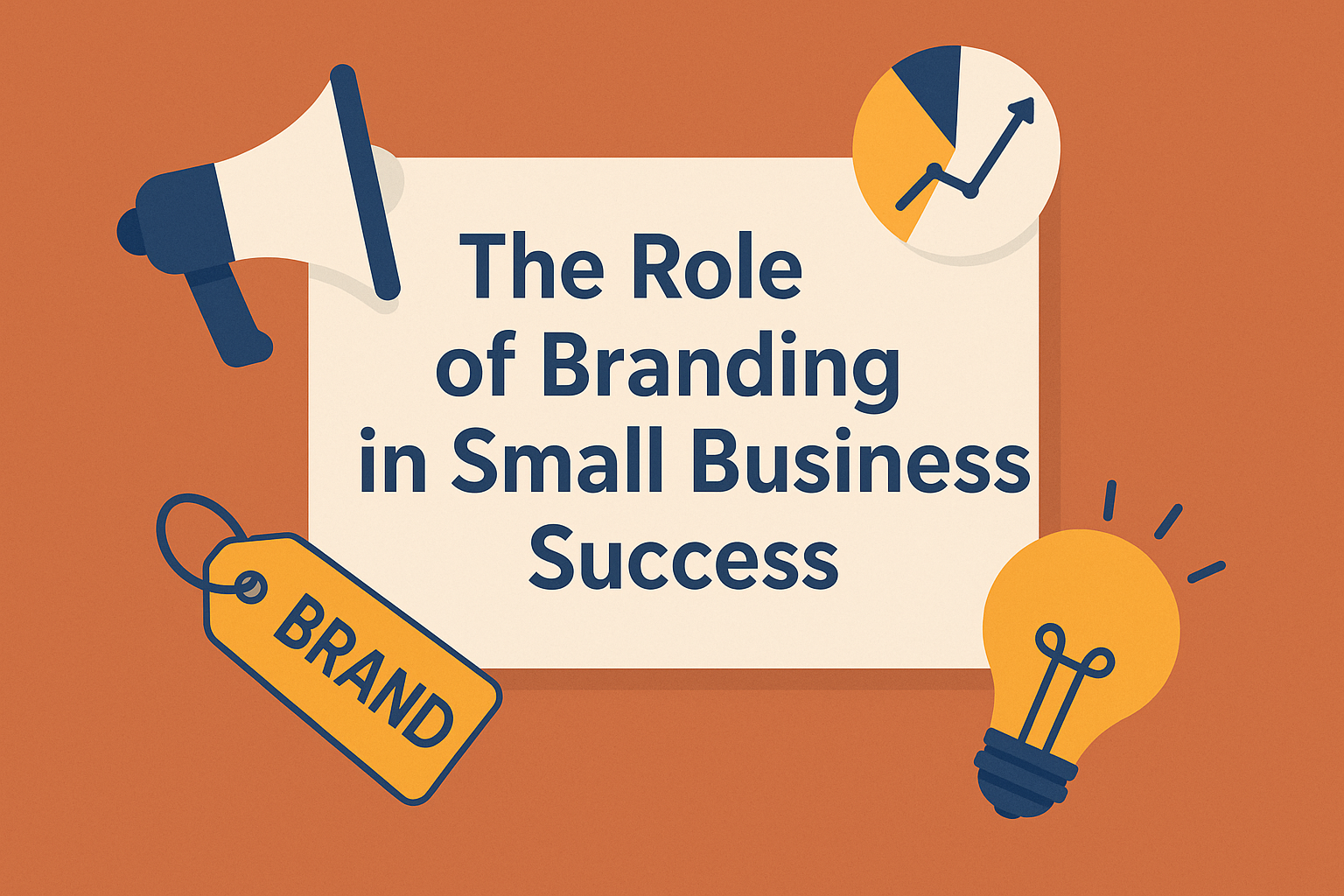Branding is more than just a logo or a color palette. It’s how people feel about your business — the story, tone, values, and emotions they associate with you. For small businesses trying to stand out in a crowded market, branding is one of your most powerful tools.
In this article, you’ll learn why branding matters, how it influences customer decisions, and how to build a strong brand from scratch — even on a small budget.
What Is Branding, Really?
Branding is the identity and personality of your business. It influences how people perceive you, remember you, and connect with you emotionally.
Branding includes:
- Your logo and visuals
- Your tone of voice
- Your mission, values, and story
- Customer experience and service style
- Consistency across all platforms
Good branding makes your business memorable, trustworthy, and relatable.
Why Branding Matters for Small Businesses
You might think branding is only for big corporations, but it’s just as important — if not more — for small businesses.
Here’s why:
- Trust: People buy from brands they recognize and trust.
- Recognition: Consistent branding makes you more memorable.
- Connection: A clear brand voice and values build loyalty.
- Perceived value: Strong branding lets you charge premium prices.
- Differentiation: Branding sets you apart from competitors.
If customers don’t remember you or can’t explain what you stand for, you’ve got a branding gap.
Define Your Brand Identity
Before choosing colors or fonts, define who you are as a business.
Ask:
- What is our mission? (Why do we exist?)
- What are our core values?
- What kind of personality would our brand have if it were a person?
- What transformation do we help customers achieve?
- What do we want customers to feel when they interact with us?
Example brand personality traits: Friendly, bold, professional, caring, witty, adventurous
Know Your Audience Deeply
Your brand should speak directly to your ideal customer — not everyone.
Get specific:
- Who are they?
- What do they care about?
- What tone and visuals appeal to them?
- What are their goals, challenges, and values?
The more aligned your branding is with your audience, the easier it is to attract loyal customers.
Choose Visual Branding Elements
Once you know your identity and audience, choose visuals that express your brand personality.
Elements include:
- Logo (simple and adaptable)
- Color palette (choose 2–4 primary colors)
- Typography (fonts that reflect your tone)
- Imagery style (photos, illustrations, icons)
Free tools to help:
- Canva (logo and brand kit creator)
- Coolors (color palette generator)
- Looka (AI logo design)
Keep it consistent across all touchpoints: website, social media, packaging, etc.
Craft Your Brand Voice
Your brand voice is how your business sounds in written and spoken communication.
Voice checklist:
- Are you formal or casual?
- Do you use emojis and slang or polished language?
- Are you motivational, informative, humorous, or empathetic?
Tip: Write sample Instagram captions, emails, and web headlines in your brand voice to test it out.
Consistency in voice builds familiarity and trust.
Tell Your Brand Story
Stories stick. A powerful origin story humanizes your business and draws people in emotionally.
Structure to follow:
- What problem did you see in the world?
- What inspired you to start this business?
- What transformation do you offer?
- What makes your approach different?
Share your story on your “About” page, social media, and intro emails.
Deliver a Consistent Brand Experience
Branding goes beyond visuals and words. It’s also how people experience your business.
Consistency means:
- Your packaging matches your Instagram feed
- Your tone is the same in emails and DMs
- Your customer service reflects your values
- You respond to problems in line with your brand identity
Small actions build a big reputation.
Showcase Testimonials and Social Proof
One of the strongest branding tools is what others say about you.
Use:
- Screenshots of client praise
- Google reviews and star ratings
- Case studies or before/after stories
- User-generated content (photos or tags)
These reinforce your message and build confidence in new customers.
Revisit and Refine Regularly
Your brand will evolve as your business grows. Check in on your branding every 6–12 months.
Ask:
- Does this still represent our values?
- Is our audience the same?
- Are we consistent across all platforms?
- What feedback have we received?
Small tweaks keep your brand sharp and relevant.
Final Thoughts: Your Brand Is a Business Asset
Strong branding doesn’t require a big budget — just clarity, consistency, and care. When done right, branding builds connection, trust, and lasting impact.
Your brand is not just how you look — it’s how you make people feel.
